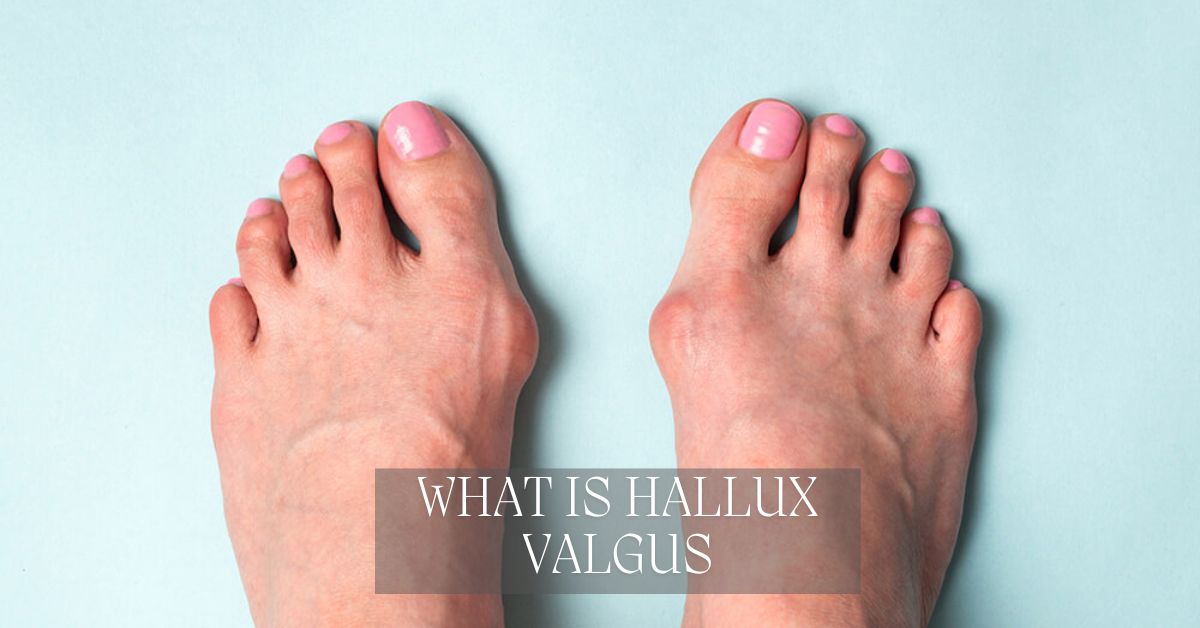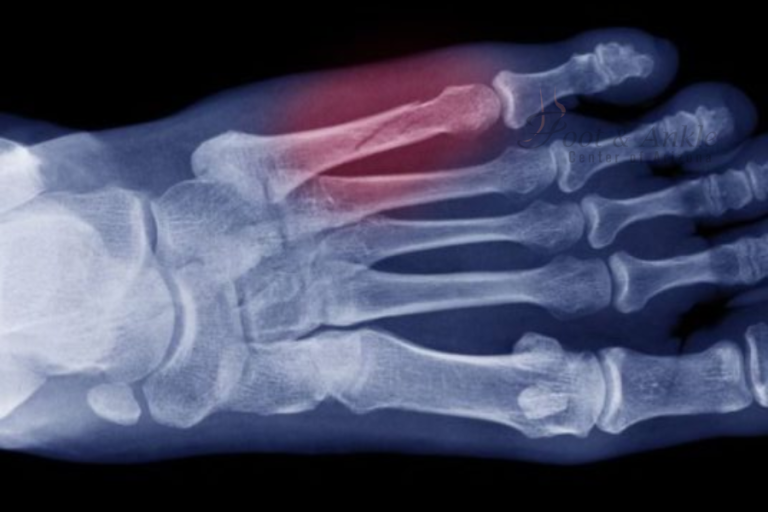Hallux valgus, commonly referred to as a bunion, is a deformity of the joint connecting the big toe to the foot. The hallux valgus condition, by definition, laterally deviates from the hallux, which mostly produces an observable bump on the side of the foot. Bunion deformity at times is painful and incapacitating, affecting simple daily activities such as walking and standing. This is, therefore, a very common condition, especially in females and the elderly. The following blog post will give an overview of Hallux valgus, including its causes, symptoms, diagnosis, and treatment, both conservative and surgical. We will also look into the relationship between hallux valgus and Morton’s Neuroma, another major foot condition, and discuss surgical solutions that deal with both.
What is Bunions (Hallux Valgus)?
Hallux valgus is a progressive deformity in which the big toe shifts toward the second toe, resulting in misalignment of the metatarsophalangeal joint at the base of the big toe. This results in the creation of a bony prominence on the side of the foot. Pain, swelling, and redness around the MTP joint are the hallux valgus symptoms and shoe wear and walking are compromised. This can further lead to corns and calluses from friction and pressure on the foot.
Many risk factors lead to hallux valgus: genetic background, structural anomalies, and certain kinds of shoes, such as high heels and pointed shoes. Other risk factors are arthritis, notably rheumatoid arthritis, and neuromuscular diseases. The incidence of hallux valgus is greater in females than in males, and the condition occurs more frequently with advancing age.
Diagnosis of Hallux Valgus
The diagnosis of hallux valgus is usually made by a physical examination by the doctor. The doctor will examine the deformity, swelling, and tenderness of the MTP joint during the examination. The doctor may further assess the range of motion in the big toe and check the gait of a patient.
Imaging modalities, such as X-rays, can also be necessary to confirm the diagnosis and measure the degree of severity. Thus, X-rays are capable of demonstrating the extent of misalignment and degenerative changes in the joint. In some cases, an MRI is ordered to evaluate the soft tissues to identify other conjoined conditions, including arthritis and bursitis.
Conservative treatment measures
Hallux valgus is amenable to conservative treatments in many patients. This involves modifying lifestyles, including the use of wide-toed, supporting shoes and avoiding high heels to reduce pressure on the affected joint. Maintaining a healthy body weight is also paramount since an overweight body tends to worsen the situation.
These devices include orthotics, such as customized shoe inserts or braces, that may help in repositioning the foot and at the same time relieve pressure. They may include relief from pain and prevent further deformity. Physical therapy and exercises performed to build up muscles around the foot enhance flexibility. Common exercises include toe stretches, curling of toes, and picking up things with the toes.
Inflammation and pain can be controlled by pain management strategies that help manage discomfort, for example, through the use of nonsteroidal anti-inflammatory drugs. Other modalities of treatment include ice application and bunion pads or cushions, which patients can use to cushion the deformity. Corticosteroid injections are sometimes indicated in patients who have hallux valgus with severe inflammation and pain.
Surgical interventions for hallux valgus
Surgery can be indicated in patients whose conservative treatments do not provide sufficient alleviation of symptoms. Surgical intervention is generally recommended for patients with severe deformity, persistent pain, or a considerable impairment in functional everyday activity. Surgery should aim at correcting the deformity, alleviating pain, and also restoring normal function to the foot.
Hallux valgus surgical procedures include:
Osteotomy: This is a surgical procedure where the bones of the big toe are cut and realigned in their correct position. The bones thereafter are held in place by screws, plates, or wires.
Arthrodesis: It is a surgical process whereby the damaged portions of the joint are removed by the surgeon. And the bones are ‘fused’ or joined together. It is recommended in case of severe arthritis or recurring deformity.
Exostectomy: A surgical procedure in which the bony prominence on the side of the foot is removed, but the bones are not realigned. This is usually performed in conjunction with other procedures that address the underlying deformity.
Recovery from the surgery for hallux valgus is variable, as it depends on the modalities used. Patients usually need to wear a protective boot or cast for some weeks and often use crutches not to put weight on the foot. Physical therapy is often recommended to aid in recovery and the regaining of mobility. Most patients resume regular activities after a few months, although it may take a year or more for full recovery.
Morton’s Neuroma and Hallux Valgus
Morton’s neuroma is an interdigital neuralgia that results in pain, tingling, and numbness of the ball of the foot. It occurs when the tissue that surrounds one of the nerves leading to the toes thickens. This usually is due to irritation or compression. Morton’s neuroma is normally associated with tight shoes or high-heeled shoes, as these produce great pressure on the forefoot.
There is some relationship between hallux valgus and Morton’s neuroma. The misalignment and altered biomechanics in Hallux valgus can predispose to the formation of Morton’s neuroma. Sharp, burning pain in the ball of the foot, which may radiate to the toes. And a sensation of having a pebble in the shoe are characteristic symptoms of Morton’s neuroma.
Surgical Options for Morton’s Neuroma
When such conservative treatments for Morton’s neuroma like footwear modification, orthotic foot devices. And corticosteroid injections do not satisfactorily work, then it needs surgical treatment. Several surgical options can treat Morton’s neuroma. These include:
Morton’s Neuroma Surgery: The surgery involves the removal of thickened nerve tissue to relieve pain.
Neuroma Excision: Under this, the entrapped nerve is excised by adjusting surrounding tissues to reduce pressure on the remaining nerves.
Morton Neuroma Surgery: This is similar to any other type of neuroma surgery, based on the removal of the affected nerve.
Surgery for Neuroma: A general term for surgical removal of a neuroma.
Neuroma Foot Surgery: The specific area of the foot that suffers from the neuroma.
Surgery for Morton’s Neuroma: There are various techniques used to remove the neuroma and ease pain.
Morton’s Neuroma Surgery Recovery: The time needed for recovery differs but usually involves some weeks of rest and a gradual return to normal activities.
Neuroma Removal: A surgery where thickened nerve tissue is removed.
Foot Neuroma Surgery: This is a general term for surgical procedures dealing with neuromas in the foot.
Recovery from neuroma surgery generally involves a period of rest and limited weight-bearing activity. Many patients must wear a special boot or use crutches for some time early in the recovery period. Physical therapy may be ordered for the patient to achieve full strength and flexibility in the foot. The majority of the patient’s symptoms have improved, and they return to normal activity within a few months.
Prevention of Hallux Valgus and Associated Disorders
Reduction of risk factors and maintenance of good foot health are the ways to prevent Hallux valgus and its associated conditions. Here are some prevention tips:
Wear proper shoes: Use shoes that have good arch support and a wide toe box. Shoes with high heels and narrow and tight and will squeeze the toes or rub on them, which will aggravate deformity.
Maintain a Healthy Weight: Excess weight puts additional stress on the feet, increasing the risk of developing hallux valgus and other conditions involving the feet. Stretching and strengthening the muscles of the feet—regularly—will help in maintaining proper alignment and preventing deformities.
Early Intervention: If any signs of foot deformity or discomfort are noted, immediate professional advice should be sought to enable its arrest at an early stage of development.
Preventive Measures for Morton’s Neuroma: As in hallux valgus, proper footwear and maintaining a healthy weight are the two main preventive measures against Morton’s neuroma. Avoid activities with pressure on the forefoot, and use orthotic devices for support to the foot.
Most Common FAQs
1. What causes hallux valgus to develop?
Several factors can contribute, including genetics, structural foot problems, wearing tight or high-heeled shoes, arthritis, and aging. Women and older adults are more likely to develop the condition.
2. How is hallux valgus diagnosed?
Doctors usually diagnose hallux valgus through a physical exam and review of symptoms. X-rays may also be used to measure the severity of the deformity and check for joint changes.
3. Can hallux valgus be treated without surgery?
Yes. Conservative treatments include wearing wide-toed shoes, using orthotics, toe exercises, physical therapy, bunion pads, and anti-inflammatory medication. These methods don’t cure the deformity but can reduce pain and slow progression.
4. When is surgery needed for hallux valgus?
Surgery is recommended if conservative measures fail and the bunion causes severe pain, difficulty walking, or significant deformity. Procedures may involve realigning bones (osteotomy), fusing the joint (arthrodesis), or removing the bony bump (exostectomy).
Conclusion
Hallux valgus is a frequent and frequently painful deformity of the foot, which can seriously influence everyday life. Knowing the causes, symptoms, and various treatment options is therefore very important in managing the condition. Morton’s neuroma is another related condition of the foot that may be a cause of pain. While both can be managed by conservative treatments, surgical options are available for bad cases. If you have foot pain or think you may have Hallux valgus or Morton’s neuroma, see a professional for advice. At Foot and Ankle Center of Arizona, our well-trained team is committed to delivering high-quality, effective, and practical treatment solutions for the recuperation of all your foot and ankle problems.




